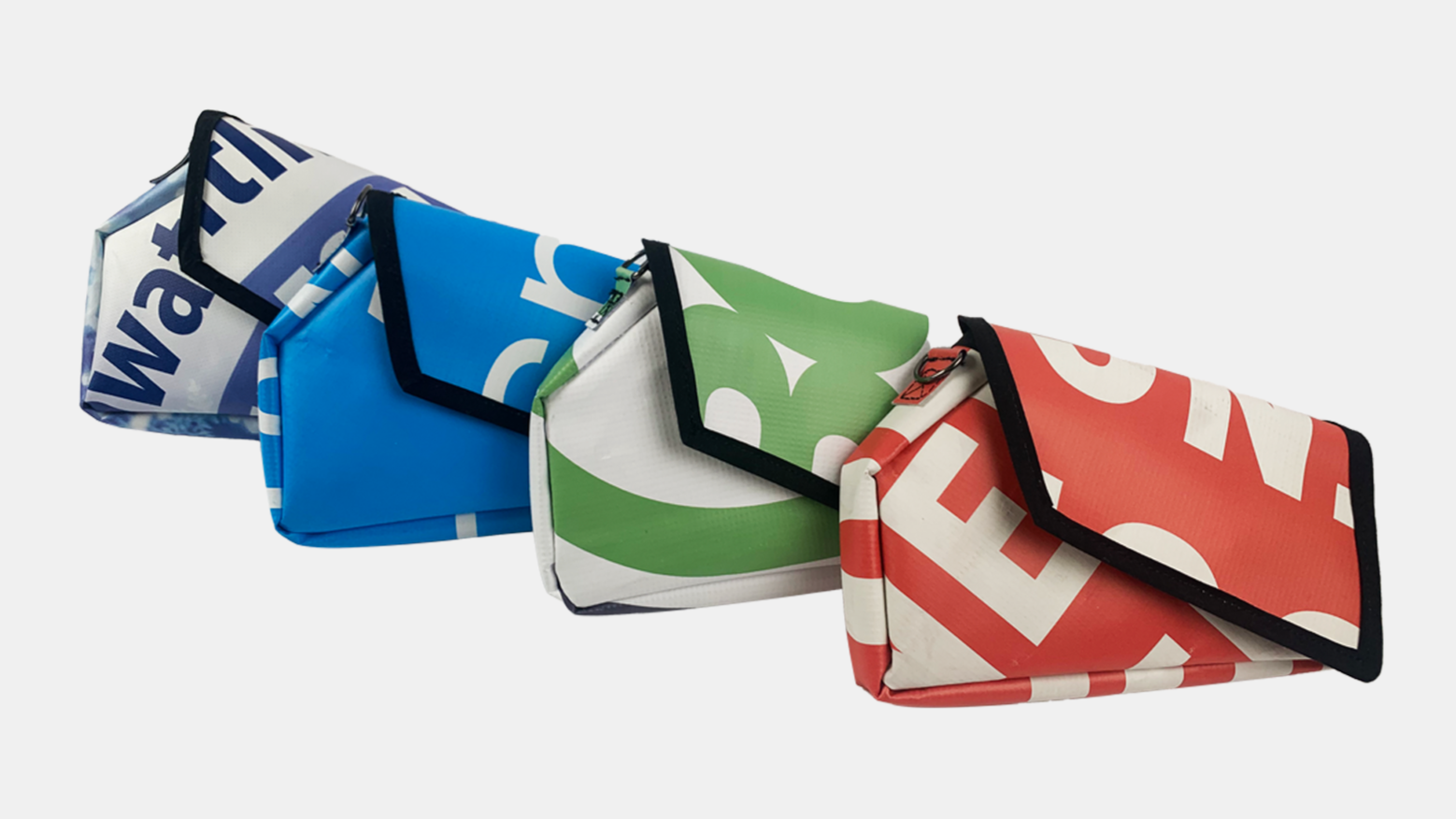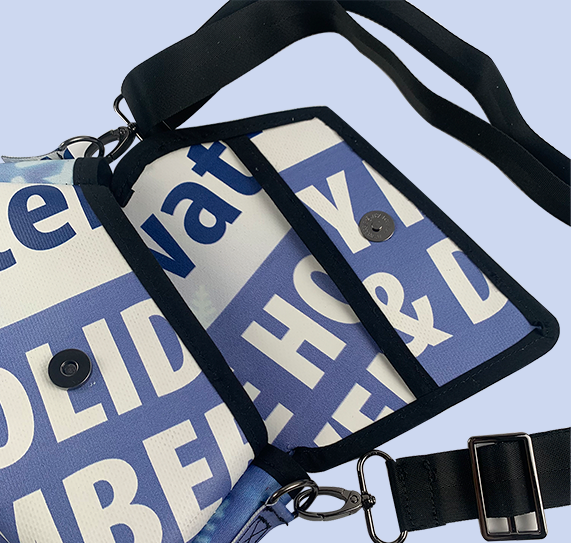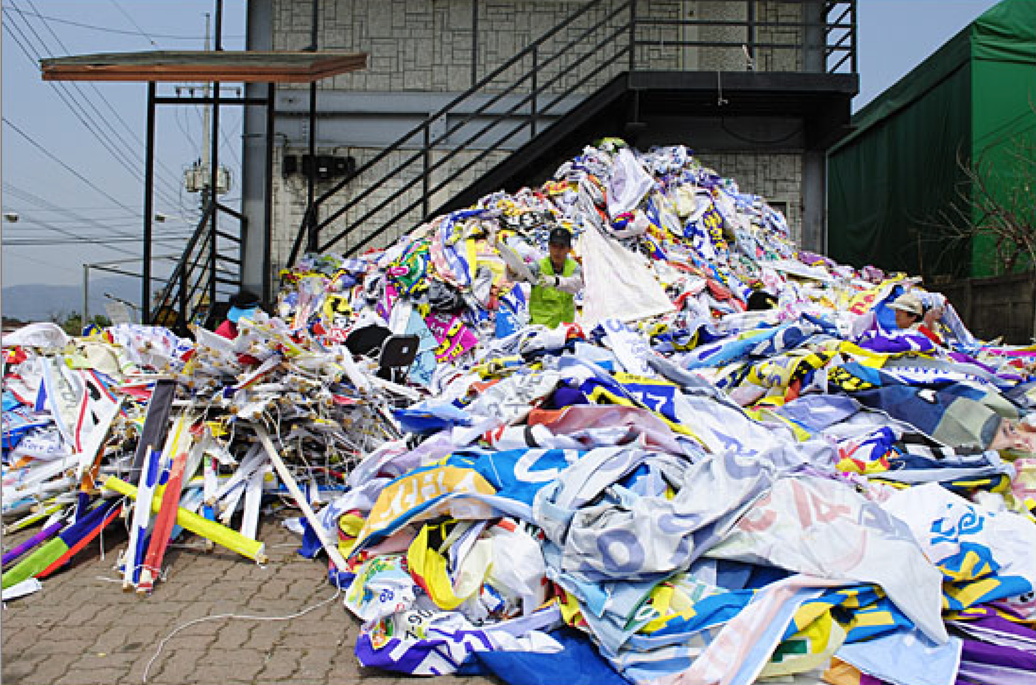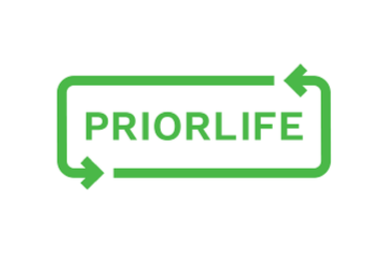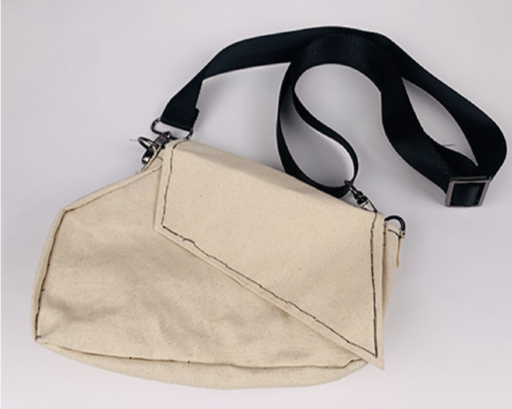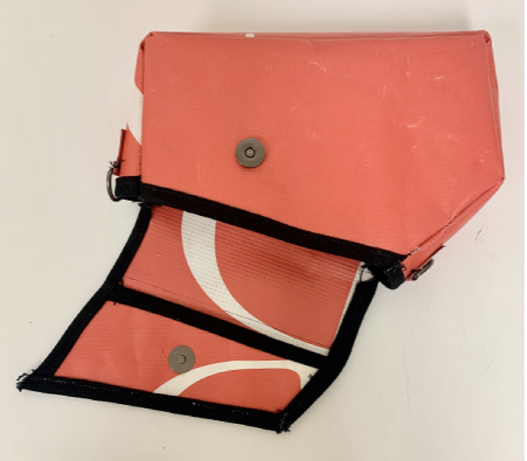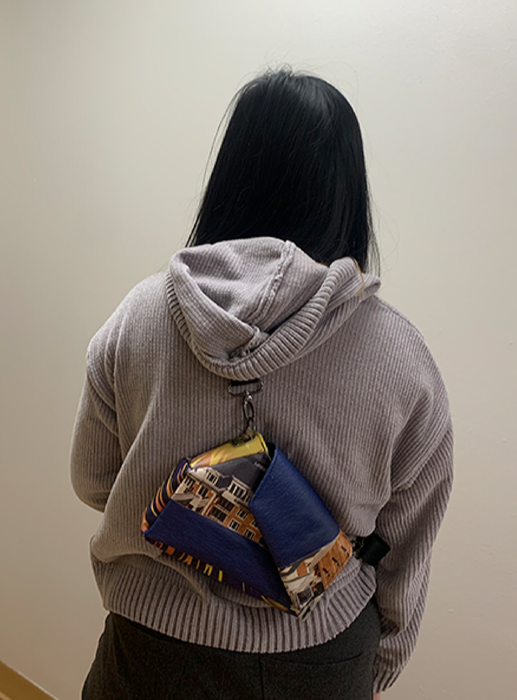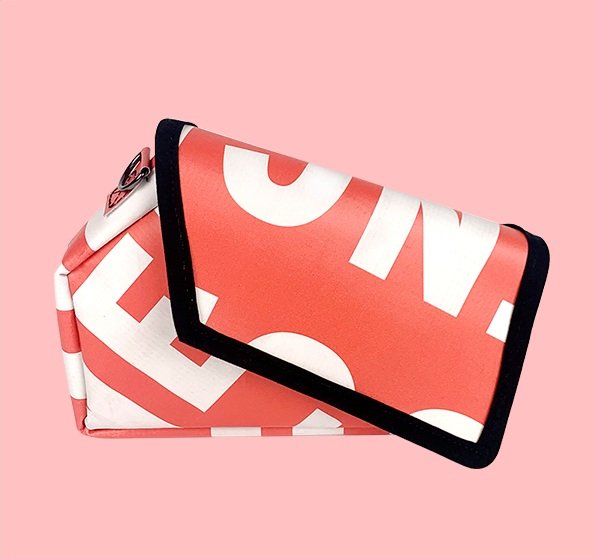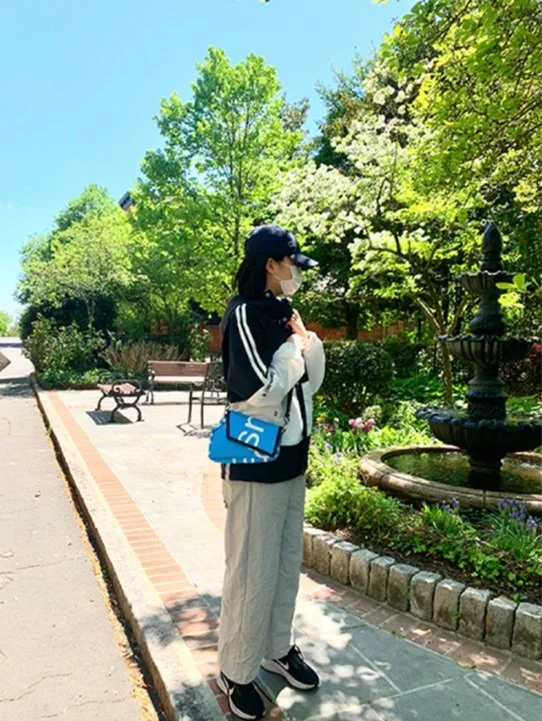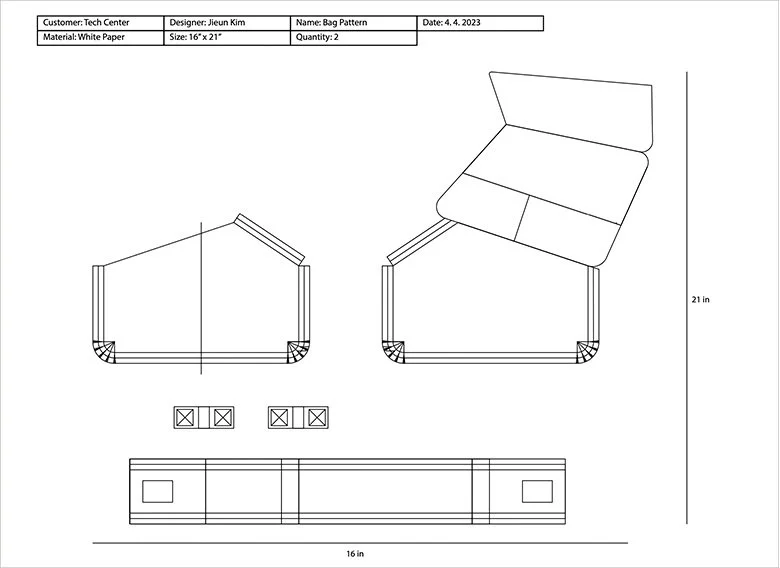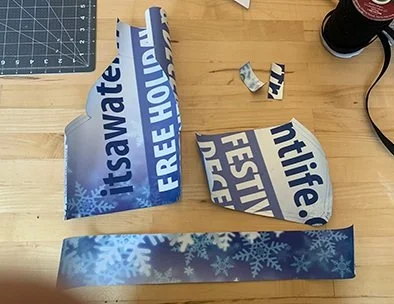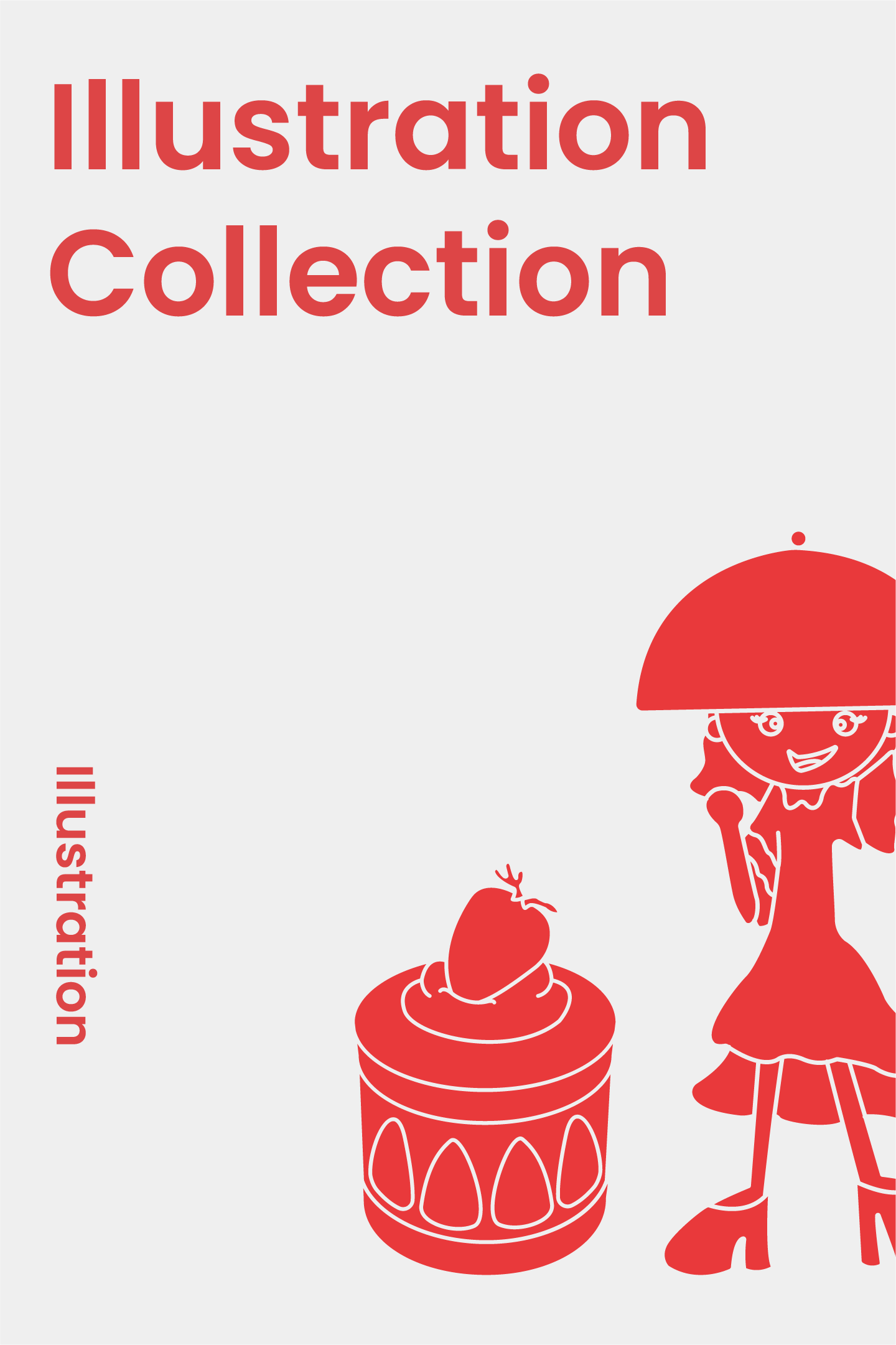ReBanner Bag
ReBanner Bag
"ReBanner Bag" is a bag with a distinct design, repurposed from discarded banners, setting it apart from existing products.
Research
Through researching enterprises that manufacture products to address prevailing issues and tackle identified challenges, insights have been gained into potential areas for improvement.
Problem
Countless banners are currently being produced and discarded. Primarily used for advertising purposes, banners are utilized for a specific period and then disposed of. However, these banners are predominantly made from plastics such as PVC, which are not easily recyclable. Moreover, a single banner emits 4 kg of greenhouse gases and is associated with the release of carcinogenic substances of level 1, thereby causing significant adverse environmental impacts.
Greenhouse gas emissions of 4 kg
Carcinogenic substances of level 1
Existing Products
+
=
One Banner
Numerous companies are currently addressing this issue by utilizing discarded banners to produce various products, including bags, phone cases, pouches, and more. Companies specializing in bag production, in particular, are readily identifiable.
Matrix
A study of products from five existing companies has been conducted. These products range from those crafted solely using discarded banners to those employing a blend of different materials. Furthermore, the matrix categorizes products based on their rarity in design, encompassing both unconventional designs and everyday items commonly encountered.
Discoveries through the Matrix
Bags crafted from repurposed banners exhibit distinctive forms, but such unique designs are not common.
Bags shaped from repurposed banners predominantly take the form of rectangles, similar to messenger bags.
The bag types mainly encompass crossbody, shoulder, and handbags.
Goals Identified via the Matrix
In terms of design, the objective is to create bags suitable for all seasons, rather than limited to specific times.
The bags should possess unique designs that complement various daily outfits.
The primary focus is on utilizing discarded banners without incorporating different materials.
The aim is to design a small-sized sling bag, ideal for daily wear and carrying common items like mobile phones, that aligns with both uniqueness and versatility.
Ideation Sketch
Taking into account the stiff texture of banners, sketches of several achievable bag designs were created.
Prototype & User Testing
Through multiple prototypes and user testing sessions, insights were gained into areas that require improvement.
1st Prototype
Over the shoulder sideways
Over the front
The first prototype was crafted using muslin fabric. This prototype aided in understanding the shape, size, and comfort, while feedback from people around helped identify areas for enhancement.
1st Prototype Feedback
It would be preferable if the corners of the flap do not extend beyond the base of the bag.
An increase of 1 inch in the overall size of the bag would be desirable.
The bag's form is unique.
2nd Prototype
Based on the feedback from the first prototype, the second prototype was created using actual discarded banners. During the crafting process, it was noticed that the bag's edges were not tidy. This led to the creation of two versions of the flap - one bound with bias tape and the other left unbound.
User Testing
Crossbody
Over the back
User testing was conducted using the second prototype, identifying positives, discomforts, and areas for further improvement.
USER TESTING FEEDBACK
The bag's form has been uniquely well-designed.
It would be preferable for the magnetic snap on the flap to easily and comfortably connect with the magnetic snap on the front of the bag.
The bound bias tape on the edges of the bag appears neater and is favored.
The overall size of the bag is suitable.
No discomfort was experienced while wearing the bag.
Detail
Illustrates the elements and composition of the product.
The flap's edges are bound with bias tape to maintain a clean appearance.
The overall form of the bag, along with the uneven flap, showcases distinctiveness.
Dual layers of magnetic snaps were used to conceal the fixed part of the magnetic snap.
An unconventional pentagon shape was used instead of the common rectangle.
The size accommodates everyday items.
Final Design
User Scene
ReBanner Bag can be worn in four styles.
Over the shoulder sideways
Crossbody
Over the front
Over the back
COGS (Cost of Goods Sold)
* It was sold at the school (MICA) store.
Making Process
Creating Patterns
1
Drawing the bag pattern on paper and continuously refining it based on changes identified through prototyping.
2
3
Bag Making Process
1
2
3
4
Attach each snaps to the front and Back pieces.
Connect back and side. (Without rounding part.)
5
6
Connect front and side. (Without rounding part.)
Punch the holes first and do Saddle Stitch which is using 2 needles.
7
8
9
Connect the strap.
The pattern was plotted onto paper using a Plotter machine.
The finalized design was modeled using the Fusion 360 software.
Cover some outlines with bias tape. Attach 2 ring parts to the side piece. (2 ring parts were made by putting the D ring inside each piece and stitching together.)
Clean the banner and cut the banner based on the patterns. (Total 5 pieces)
Flip the entire part.
Cut the outlines. (Leave ⅛”) Remove the messy parts.
